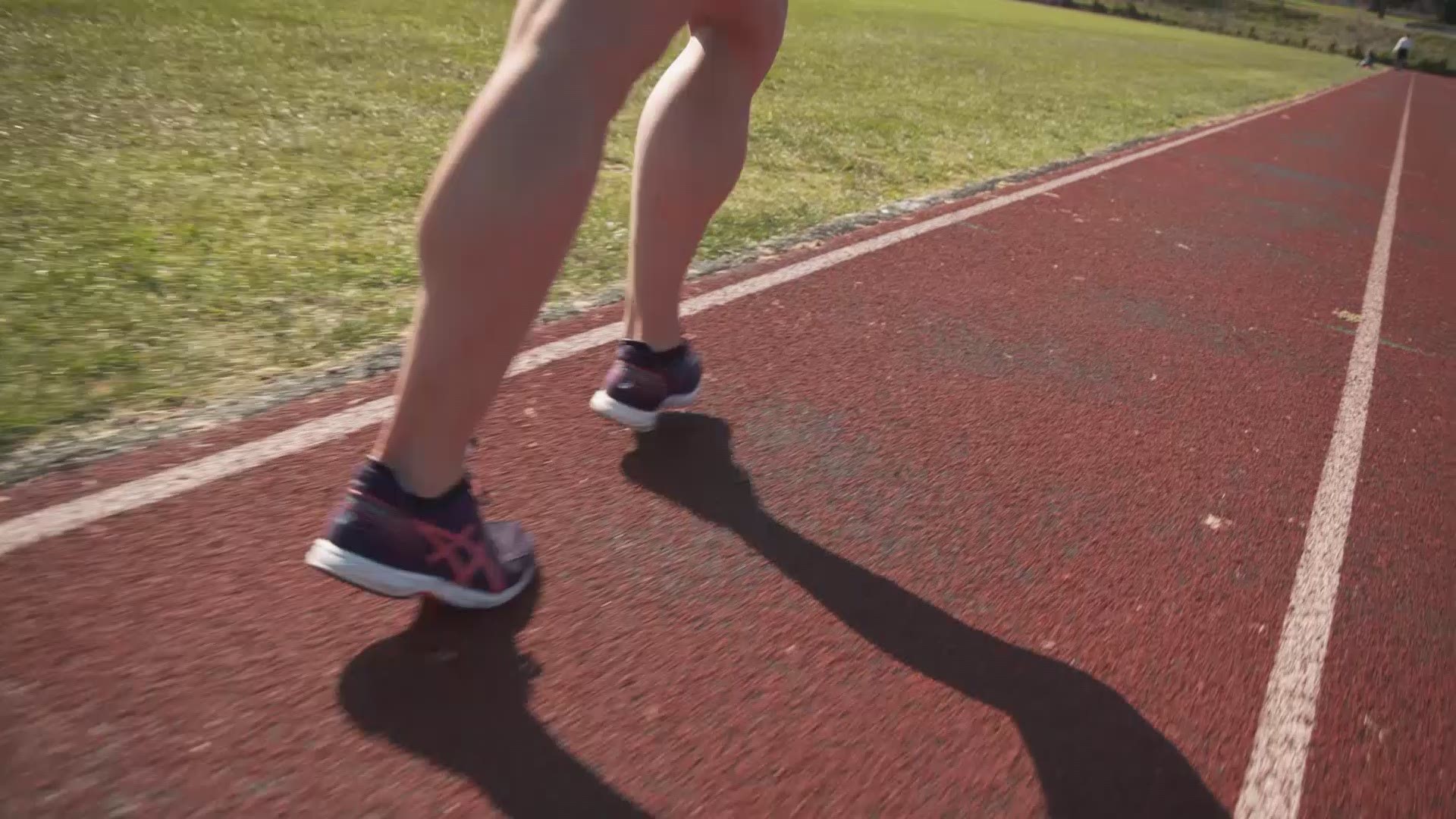BELLEVUE, Wash — Race walking may look easy, but it’s not.
It takes endurance and speed, and athletes have to know the rules, or they could end up with a red card or a trip to the penalty zone. Katie Burnett, an American record holder in race walking, lives right here in Bellevue. She won a national title and finished 4th at the World Championships in 2017. Burnett gave King 5's Chris Egan a closer look at the sport.
“Race-walking is one of the oldest events in the Olympic games. It was actually part of the original all-around, which is now the decathlon, but they had to get rid of it, because if you got disqualified, you got zero points,” Burnett said.
Getting disqualified in race walking is not a rare occurrence. A racewalker's lead leg must be straight from the moment it comes in contact with the ground, Burnett said. Racewalkers must always be in contact with the ground, which judges are very strict about. During big events, judges are lined up around the track.
“So, like, when I’m walking very fast, there's a very tiny moment where I'm off the ground, and that’s why we have judges around the track to try and catch us if we are too much off the ground,“ Burnett said.
Speed is achieved by stepping quickly. Strides are short and quick, with push-off coming forward from the ball of the foot to minimize the risk of losing contact with the ground. But if it looks like you're shifting from a walk to a run, the judges will lay down the law.
“They can give you a warning paddle, then after that, if they don’t think you have fixed it, you can get a red card and if you get three red cards you go into a penalty zone and if you come out and get a 4th red card you are you disqualified,” Burnett said.
Time in the penalty zone depends on the length of the race. For a 10k race, runners will be in the penalty zone for one minute. For a 60k, runners will be stuck in the penalty zone for five minutes.
Burnett walks 60-100 miles a week but says it’s not easy for all.
“The straight knee is the hardest thing for people to pick up on at first," Burnett said. "It’s the classic heel-toe motion that helps with the straight knee, but some people like their quads are just too tight, and they just can't get it down,” says Burnett.
Burnett hopes to qualify for the 2021 Olympics in the coming months. The USA track and field trials will take place in Eugene, Oregon beginning on June 18.

